Northeast Texas African-American Digital Collection
For years, documents vital to the history of African-Americans in Northeast Texas gathered dust in storage or were known only to a few people. However, the African-American History Collection, part of the Northeast Texas Digital Collections at Texas A&M University-Commerce, provides an online archive that allows people around the world to see historic photographs, peruse school yearbooks, read church publications and hear oral histories.
Listen as KETR’s Mark Haslett, of Northeast Texas Public Radio, speaks with Andrea Weddle, Head of Special Collections and Archives at A&M-Commerce, about the African-American digital collection which serves as a central location for historical documents relating to the history of African-Americans in the northeast region.
Image: “Crowning the Center Point Queen” — Center Point, in Camp County, began as a Freedmen’s community following the Civil War. In 1899, G.W. Goulsby opened a one-room school, the first in the settlement. In 1916 a new five-room school was built. Courtesy of Edgie Reeves / Northeast Texas Digital Collections
Historic Preservation: A Walk Through Sites of African American History
Madame C.J. Walker’s “Villa Lewaro”
The history of African Americans is typically thought of as people and events, but those could not come together without places and spaces. In an effort to preserve many of the sites where Black History events occurred, the National Trust for Historic Preservation is working to protect sites that tell the story of Black America. The Trust shared a few photos with EBONY.com exhibiting some of them. All of these sites are a part of the National Trust’s National Treasure program where it is making a long-term commitment to find a preservation solution. For more information, visit www.savingplaces.org.
Included is the Madam CJ Walker’s Villa Lewaro, in Irvington, N.Y.: Built in 1917, Villa Lewaro is the residence of America’s first self-made female millionaire, Madam C.J. Walker. Her home, a symbol of the optimism and perseverance of American entrepreneurialism, is in need of preservation protections. The National Trust is working to explore protection strategies, to understand the building’s potential, and to develop a documentary on Walker’s legacy and Villa Lewaro.
Quadricentennial: “400 Years of African American History Act”
U.S. Sen. Tim Kaine, D-VA
On Feb. 11, a group of U.S. Senators alongside the NAACP introduced legislation that would establish a commission to plan programs and activities in 2019 across the country to recognize the arrival and influence of Africans in America.
This piece of legislation is the 400 Years of African American History Act and was introduced by U.S. Senators Tim Kaine, Mark Warner, Congressmen Bobby Scott, Don Beyer, G.K. Butterfield, Chairman of the Congressional Black Caucus, as well as Hilary Shelton, director of the NAACP Washingto Bureau.
Similar commissions have been established to recognize English & Hispanic heritage, including the 400th anniversary of the founding of Jamestown, Va. and the 450th anniversary of the founding of St. Augustine, Fla.
This commission in particular would be charged with recognizing and highlighting the resilience and contribution of African Americans since 1619, as well as acknowledging the painful impact that slavery and laws that enforced racial discrimination have had on our nation’s history.
Click here for more information.
Read Sen. Tim Kaine (D-VA.) at The Root site on why the “400 Years of African American History Act” is so important.
Karyn Parsons: Telling inspiring true stories of little-known African-Americans
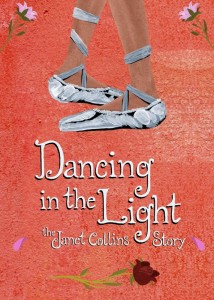 From the Christian Science Monitor:
From the Christian Science Monitor:
“For Karyn Parsons, storytelling has always been in her blood – even during her days playing the charmingly highfalutin Hilary Banks, older cousin of Will Smith, on the TV series “The Fresh Prince of Bel-Air,” and living in glossy Los Angeles as a successful 20-something actress.
“It was her craving for tales of tenacious protagonists that led Ms. Parsons to create Sweet Blackberry, a children’s film production company dedicated to telling the unfamiliar but true stories of black Americans and bringing them to life through animation.
“Her third and latest film, “Dancing in the Light,” for instance, is about Janet Collins, who became the first and only African-American prima ballerina at New York’s Metropolitan Opera more than 60 years ago.
“Unlike fairy tales, Parsons’s stories of little-known African-American heroes acknowledge the harsh historical contexts in which they take place. When writing the story of Collins, who grew up in the Jim Crow South, Parsons knew she had to delve into the complex issue of slavery in America, even though her intended audience is between the ages of 4 and 7.”
Read more about Parsons and Sweet Blackberry here.
TBHPP Bookshelf
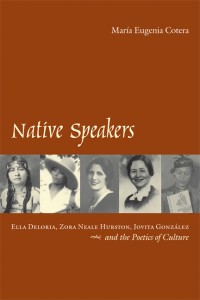 Published scholarship on black history in Texas is growing and we’d like to share with you some suggested readings, both current and past, from some of the preeminent history scholars in Texas and beyond. We invite you to take a look at our bookshelf page — including a featured selection — and check back as the list grows. A different selection will be featured each week. We welcome suggestions and reviews. This week, we offer, “Native Speakers,” by María Eugenia Cotera.
Published scholarship on black history in Texas is growing and we’d like to share with you some suggested readings, both current and past, from some of the preeminent history scholars in Texas and beyond. We invite you to take a look at our bookshelf page — including a featured selection — and check back as the list grows. A different selection will be featured each week. We welcome suggestions and reviews. This week, we offer, “Native Speakers,” by María Eugenia Cotera.
In the early twentieth century, three women of color helped shape a new world of ethnographic discovery. Ella Cara Deloria, a Sioux woman from South Dakota, Zora Neale Hurston, an African American woman from Florida, and Jovita González, a Mexican American woman from the Texas borderlands, achieved renown in the fields of folklore studies, anthropology, and ethnolinguistics during the 1920s and 1930s. While all three collaborated with leading male intellectuals in these disciplines to produce innovative ethnographic accounts of their own communities, they also turned away from ethnographic meaning making at key points in their careers and explored the realm of storytelling through vivid mixed-genre novels centered on the lives of women.
This Week In Texas Black History, Feb. 21-27
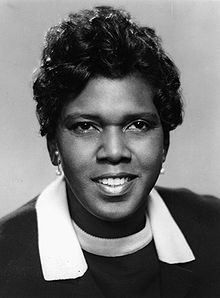 21 – On this day in 1936, Congressman Barbara Jordan was born in Houston. A graduate of Phillis Wheatley High School, Jordan was elected to the U. S. House of Representatives from the Eighteenth Texas District in 1973, becoming the first Black woman from a Southern state to serve in Congress. Jordan received the Presidential Medal of Freedom in 1994, and held the Lyndon Baines Johnson Public Service Professorship at the LBJ School of Public Affairs, University of Texas at Austin.
21 – On this day in 1936, Congressman Barbara Jordan was born in Houston. A graduate of Phillis Wheatley High School, Jordan was elected to the U. S. House of Representatives from the Eighteenth Texas District in 1973, becoming the first Black woman from a Southern state to serve in Congress. Jordan received the Presidential Medal of Freedom in 1994, and held the Lyndon Baines Johnson Public Service Professorship at the LBJ School of Public Affairs, University of Texas at Austin.
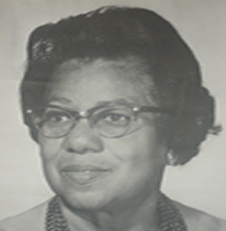 21 – Dolores Burton Linton, educator, was born on this day in 1910 in Seguin. In 1931, Linton converted a former dance hall to hold classes for black children living near San Antonio, but lacking transportation to regularly get to the city to attend school. Linton taught all six grades herself. In 1980, the Northside Independent School District named a new elementary school in her honor.
21 – Dolores Burton Linton, educator, was born on this day in 1910 in Seguin. In 1931, Linton converted a former dance hall to hold classes for black children living near San Antonio, but lacking transportation to regularly get to the city to attend school. Linton taught all six grades herself. In 1980, the Northside Independent School District named a new elementary school in her honor.
 24 – On this day in 1933, jazz saxophonist David “Fathead” Newman was born in Corsicana. Newman grew up in Dallas, graduating from Lincoln High School, then studying theology and music at Jarvis Christian College. For 12 years, beginning in 1954, he was a member of the Ray Charles Band and became the group’s lead tenor soloist. He also played with Herbie Mann, Aretha Franklin, Hank Crawford, Aaron Neville, and Austin’s Kenny Dorham. In 2005, Newman’s album, “I Remember Brother Ray,” was the most played jazz album in the nation.
24 – On this day in 1933, jazz saxophonist David “Fathead” Newman was born in Corsicana. Newman grew up in Dallas, graduating from Lincoln High School, then studying theology and music at Jarvis Christian College. For 12 years, beginning in 1954, he was a member of the Ray Charles Band and became the group’s lead tenor soloist. He also played with Herbie Mann, Aretha Franklin, Hank Crawford, Aaron Neville, and Austin’s Kenny Dorham. In 2005, Newman’s album, “I Remember Brother Ray,” was the most played jazz album in the nation.
 26 – Heman Sweatt, accompanied by a delegation from the NAACP, met with University of Texas president Theophilus S. Painter and other university officials on this day in 1946 to present a formal request for Sweatt’s admission to the UT law school. The legal case resulting from this request, Sweatt v. Painter, became a landmark civil rights decision, one of several that struck down the doctrine of “separate but equal” educational facilities. Sweatt finally registered at the school on September 19, 1950.
26 – Heman Sweatt, accompanied by a delegation from the NAACP, met with University of Texas president Theophilus S. Painter and other university officials on this day in 1946 to present a formal request for Sweatt’s admission to the UT law school. The legal case resulting from this request, Sweatt v. Painter, became a landmark civil rights decision, one of several that struck down the doctrine of “separate but equal” educational facilities. Sweatt finally registered at the school on September 19, 1950.
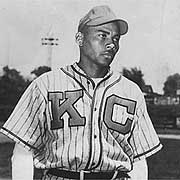 27 – Negro Leagues pitcher Hilton Smith was born on this day in 1907 in Giddings. He played baseball at Prairie View A&M College and then, in 1931 with the Austin Black Senators and in 1932 the Monroe (La.) Monarchs. In 1937, he joined the Kansas City Monarchs, of the newly formed Negro American League and played there until 1948. With Kansas City, he frequently came on in relief of the great Satchel Paige. Smith was named to six consecutive East-West All-star Games (’37-42) and won 20 or more games in each of his 12 seasons with Kansas City, including a 93-11 record over a four-year span (’39-42). He was inducted into the Baseball Hall of Fame in 2001. Buck O’Neil, his teammate and close friend said of him, “From 1940 to 1946, Hilton Smith might have been the greatest pitcher in the world.”
27 – Negro Leagues pitcher Hilton Smith was born on this day in 1907 in Giddings. He played baseball at Prairie View A&M College and then, in 1931 with the Austin Black Senators and in 1932 the Monroe (La.) Monarchs. In 1937, he joined the Kansas City Monarchs, of the newly formed Negro American League and played there until 1948. With Kansas City, he frequently came on in relief of the great Satchel Paige. Smith was named to six consecutive East-West All-star Games (’37-42) and won 20 or more games in each of his 12 seasons with Kansas City, including a 93-11 record over a four-year span (’39-42). He was inducted into the Baseball Hall of Fame in 2001. Buck O’Neil, his teammate and close friend said of him, “From 1940 to 1946, Hilton Smith might have been the greatest pitcher in the world.”
Blog: Ron Goodwin, author, PVAMU history professor
Ron Good  win’s bi-weekly blog appears exclusively for TIPHC/TBHPP. Goodwin is a San Antonio native and Air Force veteran. Generally, his column will address contemporary issues in the black community and how they relate to black history. He and the TIPHC/TBHPP staff welcome your comments. In his latest blog, “Freebird,” Goodwin offers his take on the current political season’s discourse. Read it
win’s bi-weekly blog appears exclusively for TIPHC/TBHPP. Goodwin is a San Antonio native and Air Force veteran. Generally, his column will address contemporary issues in the black community and how they relate to black history. He and the TIPHC/TBHPP staff welcome your comments. In his latest blog, “Freebird,” Goodwin offers his take on the current political season’s discourse. Read it
Submissions
Historians, scholars, students, lend us your…writings. Help us produce the most comprehensive documentation ever undertaken for the African American experience in Texas. We encourage you to contribute items about people, places, events, issues, politics/legislation, sports, entertainment, religion, etc., as general entries or essays. Our documentation is wide-ranging and diverse, and you may research and write about the subject of your interest or, to start, please consult our list of suggested biographical entries and see submission guidelines. However, all topics must be approved by TIPHC/TBHPP editors before beginning your research/writing.
We welcome your questions or comments via email or telephone – mdhurd@pvamu.edu, .


